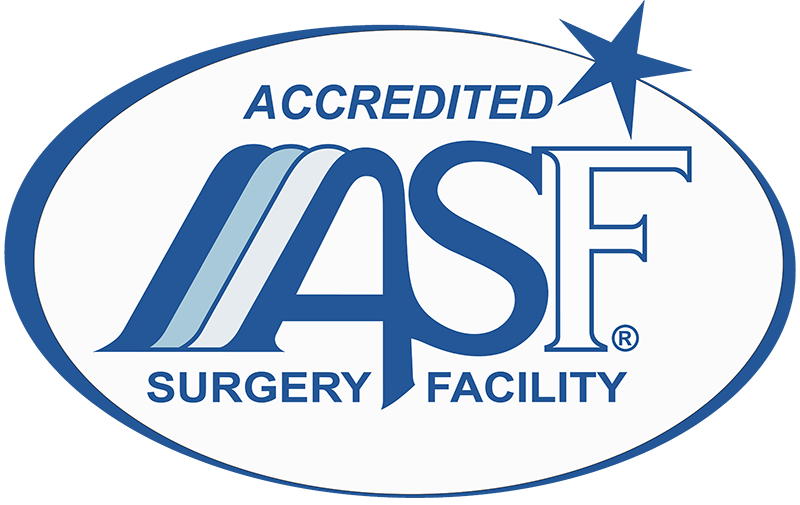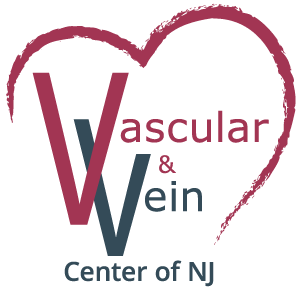Varicose Veins
Varicose veins are twisted, enlarged veins. Any superficial vein may become varicosed, but the veins most commonly affected are those in your legs. That’s because standing and walking upright increases the pressure in the veins of your lower body.
Large bulging veins in the legs that can cause many different types of symptoms.
Varicose veins can occur in almost anyone and affect up to 35% of people in the United States. You may inherit a tendency to develop varicose veins from a parent. Women, women who have had multiple children, and obese persons are at a higher risk.
Diagnosis
SEE A VASCULAR SURGEON
You will be asked questions about symptoms and medical history, including questions about family members. The vascular surgeon will also perform a physical exam that includes gently probing for problem areas on your legs while you are standing.
AN ULTRASOUND MAY BE RECOMMENDED
A painless ultrasound is usually given during during the same office visit to pinpoint problem veins and determine the best way to treat them.
Treatments
Symptoms worsen throughout the day, and can usually be improved with use of compression stocking or by elevating the feet.
COMPRESSION STOCKINGS
Knee-high compression stockings, usually that provide 20-30 mmHg of compression, will often help relieve symptoms such as aching or swelling. These stockings compress the veins and prevent blood from traveling down pooling in the legs. If you have insurance, most companies require that you wear compression stockings for at least three months before covering any other type of treatment for varicose veins.
ABLATION THERAPY
If compression stockings provide insufficient relief and if the affected veins are straight enough (determined by the ultrasound), some form of ablation therapy (laser, radiofrequency, or mechanical injection) is an option.
Treatment is administered at the vascular surgeon’s office. Your leg will be cleansed and sterile drapes placed. The vascular surgeon will then inject numbing medication and insert a catheter (thin tube) into the vein. Typically, patients feel only the injection of numbing medicine. The tube is advanced through the entire vein and then all the surrounding skin is numbed. The ablation catheter is then started and the vein treated. This part of the procedure is painless and typically takes 20 minutes. After the procedure the leg is wrapped with a compression bandage.
SCLEROTHERAPY
If the affected veins are twisted and are not sufficiently straight, sclerotherapy may be recommended. With the help of ultrasound, a small needle is advanced through the vein to inject sclerosant, a chemical that causes the vein to spasm and clot. This type of clot is not dangerous and is broken down by your body’s natural processes so that the varicose vein disappears. Small “spider” veins can be treated in the same way, using a very small needle.
POST TREATMENT
After treatment, patients should continue to wear compression stockings to help prevent new varicose veins from forming, and to speed recovery after varicose veins are treated.
Causes
Among other things, veins are responsible for bringing blood back to the heart, sometimes working against gravity. When you walk, muscles in your leg squeeze the veins and help blood flow back into the heart. In normal veins, a series of valves assist this process. With varicose veins and with a related condition called chronic venous insufficiency, poorly functioning valves allow the blood to pool in the lower leg and cause symptoms.
These factors increase your risk of developing varicose veins:
● Age. The risk of varicose veins increases with age. Aging causes wear and tear on the valves in your veins that help regulate blood flow. Eventually, that wear causes the valves to allow some blood to flow back into your veins where it collects instead of flowing up to your heart.
● Sex. Women are more likely to develop the condition. Hormonal changes during pregnancy, premenstruation or menopause may be a factor because female hormones tend to relax vein walls. Hormone treatments, such as birth control pills, may increase your risk of varicose veins.
● Pregnancy. During pregnancy, the volume of blood in your body increases. This change supports the growing fetus, but also can produce an unfortunate side effect — enlarged veins in your legs. Hormonal changes during pregnancy may also play a role.
● Family history. If other family members had varicose veins, there’s a greater chance you will too.
● Obesity. Being overweight puts added pressure on your veins.
● Standing or sitting for long periods of time. Your blood doesn’t flow as well if you’re in the same position for long periods.
Symptoms
Varicose veins may not cause any pain. Signs you may have varicose veins include:
● Veins that are dark purple or blue in color
● Veins that appear twisted and bulging; they are often like cords on your legs
When painful signs and symptoms occur, they may include:
● An achy or heavy feeling in your legs
● Burning, throbbing, muscle cramping and swelling in your lower legs
● Worsened pain after sitting or standing for a long time
● Itching around one or more of your veins
● Skin discoloration around a varicose vein
● Bleeding
● Skin tears and ulcerations
Spider veins are similar to varicose veins, but they’re smaller. Spider veins are found closer to the skin’s surface and are often red or blue.
Spider veins occur on the legs, but can also be found on the face. They vary in size and often look like a spider’s web.
Symptoms typically worsen throughout the day and are partially relieved by elevation or wearing compression socks or stockings.
Superficial Phlebitis
Sometimes, varicose veins clot and become painful, hot, hard and discolored. This is called phlebitis, an uncomfortable but temporary condition that will get better on its own in 2-3 months. Clots associated with phlebitis are limited to surface veins, and not dangerous – unlike clots in the deep veins (deep vein thrombosis or DVT) that are dangerous because they can travel to the heart or lung and require prompt treatment with blood thinners.
Prevention
There’s no way to completely prevent varicose veins. But improving your circulation and muscle tone may reduce your risk of developing varicose veins or getting additional ones. The same measures you can take to treat the discomfort from varicose veins at home can help prevent varicose veins, including:
● Exercising
● Watching your weight
● Eating a high-fiber, low-salt diet
● Avoiding high heels and tight hosiery
● Elevating your legs
● Changing your sitting or standing position regularly


